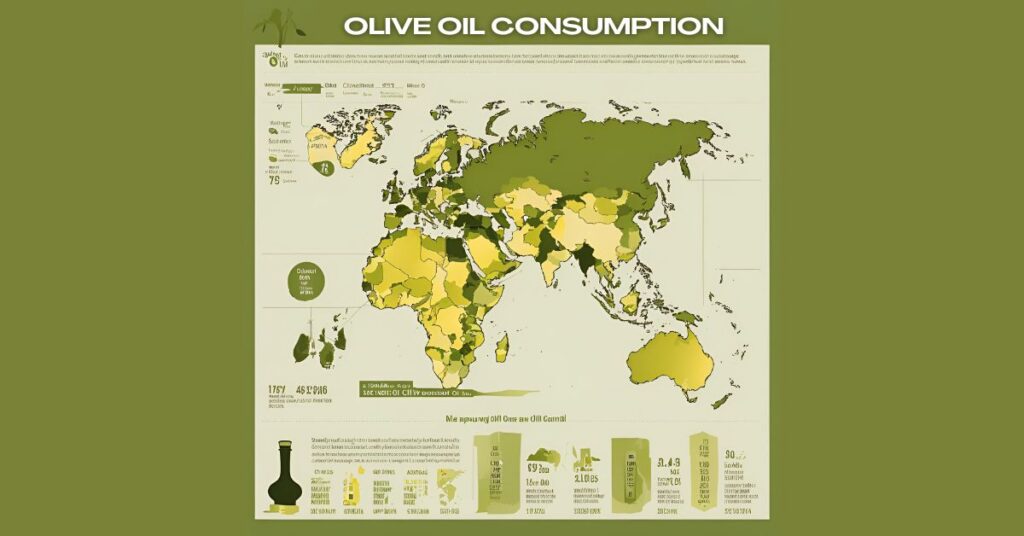
Olive Oil Consumption: Trends and Insights

Olive oil consumption has seen a remarkable rise worldwide, evolving from a Mediterranean staple to a global culinary phenomenon. Revered as “liquid gold,” its rich history and versatility have made it a sought-after ingredient across diverse cuisines. In this blog post, we explore the evolving trends in olive oil consumption around the world, examining its rising popularity, regional preferences, and the factors driving its demand.
The Mediterranean Legacy
The Mediterranean region, particularly countries like Spain, Italy, and Greece, has been synonymous with olive oil production and consumption for centuries. Olive oil forms the cornerstone of the dieta mediterranea, celebrated for its health benefits and flavorful simplicity. Spain, the world’s largest producer, consumes around 500,000 metric tons annually, much of which is integrated into everyday meals, from tapas to paellas. Italians, known for their culinary prowess, use olive oil not only for cooking but also as a finishing touch to enhance flavors. Greece, with its per capita consumption exceeding 12 liters annually, remains a leader in olive oil devotion.
Expanding Horizons: Olive Oil Goes Global
In recent decades, olive oil has transcended its Mediterranean roots, finding its way into kitchens across the globe. Countries outside the traditional olive-growing regions are now key players in consumption:
- United States: The U.S. is one of the largest importers of olive oil, with consumption exceeding 300,000 metric tons annually. Olive oil’s health benefits, particularly its heart-friendly monounsaturated fats and antioxidants, have resonated with health-conscious Americans. Culinary trends and the growing popularity of Mediterranean cuisine have further boosted its use.
- China and East Asia: Although historically unfamiliar with olive oil, East Asian countries like China, Japan, and South Korea are emerging markets. Rising awareness of Western diets and health trends has led to a steady increase in olive oil imports, often used for salad dressings and sautéing.
- India: Olive oil is gaining traction in India, particularly among urban populations. While traditional cooking oils like mustard and coconut dominate, olive oil is increasingly used for low-heat cooking and in fusion recipes.
- Latin America: Countries like Brazil and Mexico are seeing a steady rise in olive oil consumption. The middle class’s growing disposable income and a shift toward healthier eating habits are significant contributors.
Driving Factors: Health, Taste, and Trends
Several factors have contributed to olive oil’s global rise:
- Health Benefits: The global focus on healthy living has spotlighted olive oil as a “superfood.” Studies linking olive oil to reduced risks of cardiovascular diseases and other health benefits have bolstered its appeal.
- Culinary Versatility: Olive oil’s versatility—suitable for frying, baking, drizzling, and even skincare—makes it an indispensable kitchen ingredient.
- Cultural Exchange: Globalization and the proliferation of Mediterranean restaurants have introduced olive oil to new audiences, inspiring home cooks to experiment with it.
- Premiumization: As consumers become more discerning, the demand for high-quality, extra virgin olive oils has surged. Many are willing to pay a premium for artisanal and organic options.
Challenges and Sustainability
While the popularity of olive oil continues to grow, challenges persist. Climate change poses a significant threat to olive production, with extreme weather affecting harvests. Additionally, fraudulent practices, such as mislabeling lower-grade oils as extra virgin, undermine consumer trust.
Efforts to promote sustainable practices and stricter quality control measures are vital for the industry’s future. Producers are investing in innovative farming techniques and transparent supply chains to ensure that olive oil retains its esteemed place in global cuisine.
Conclusion
Olive oil’s journey from Mediterranean groves to global households is a testament to its universal appeal. As more people embrace its health benefits and culinary potential, its influence will only continue to grow. Whether drizzled over a salad in New York, used in stir-fry in Beijing, or enjoyed with bread in Athens, olive oil unites cultures in a shared appreciation for good taste and wellness.